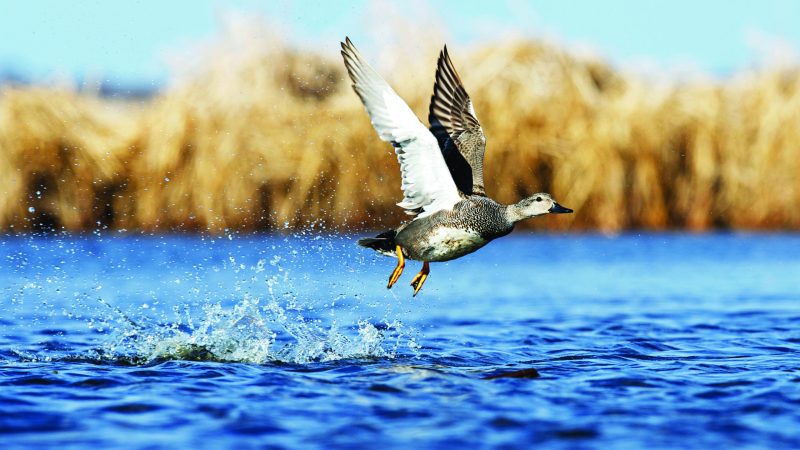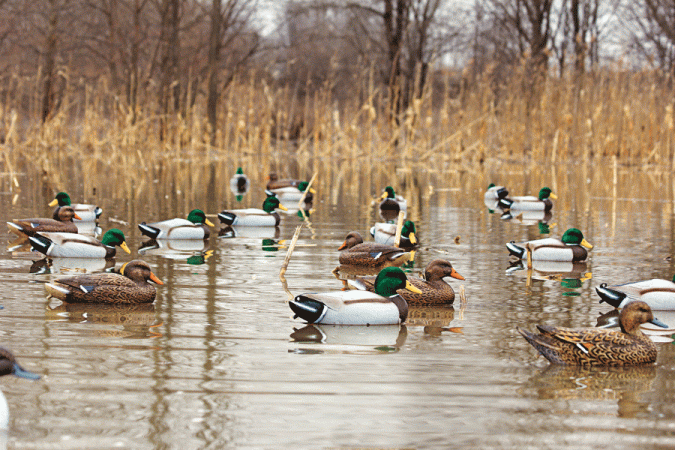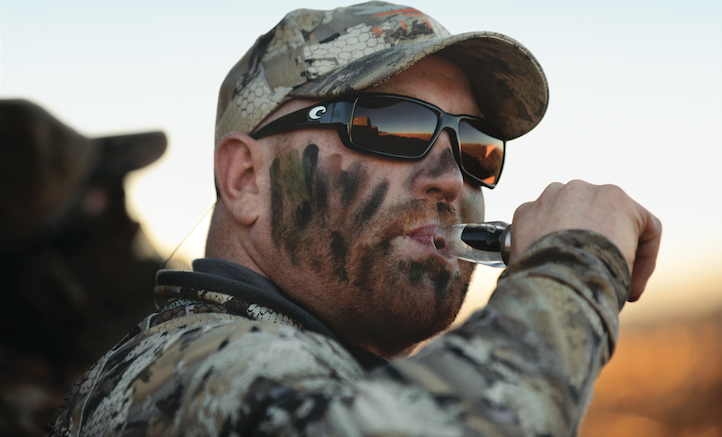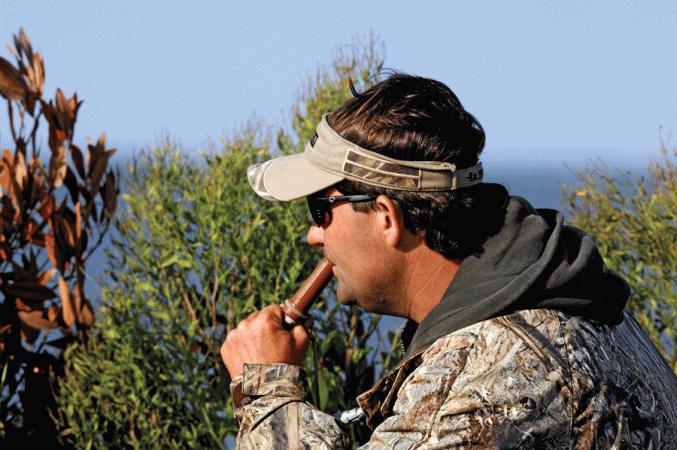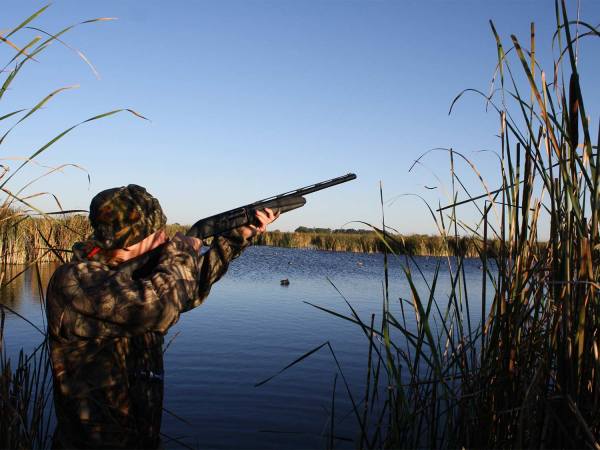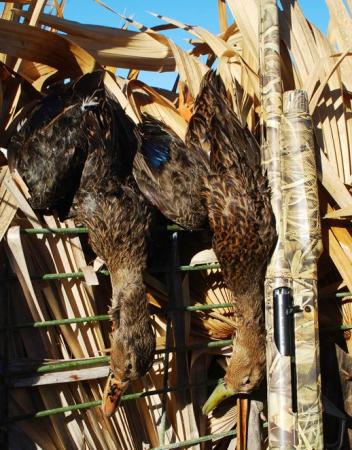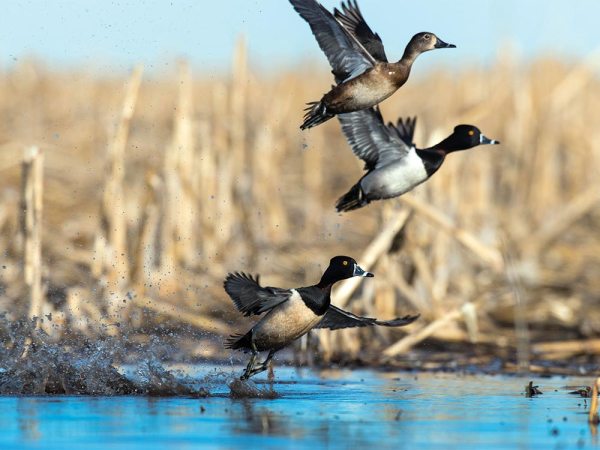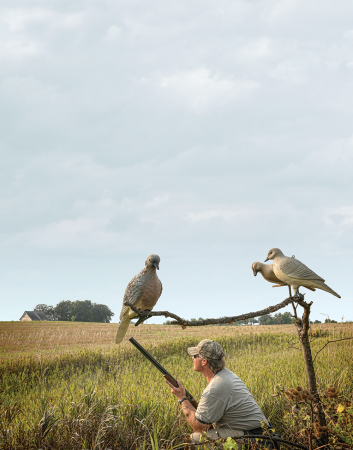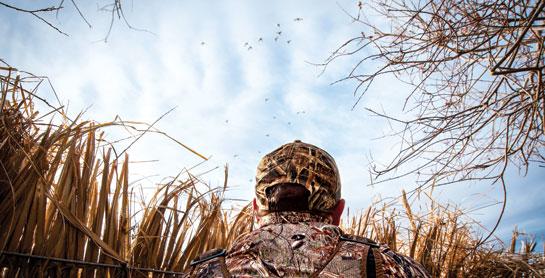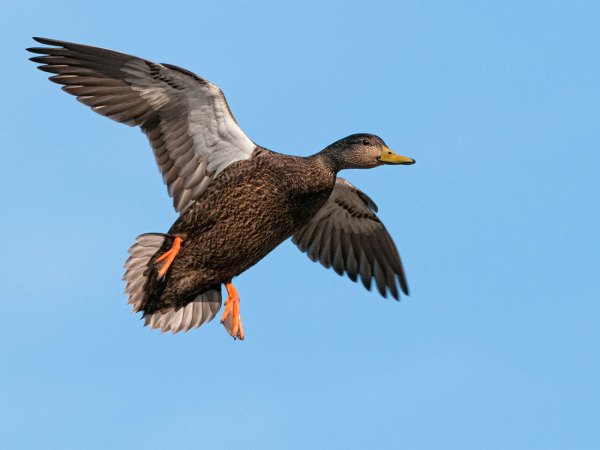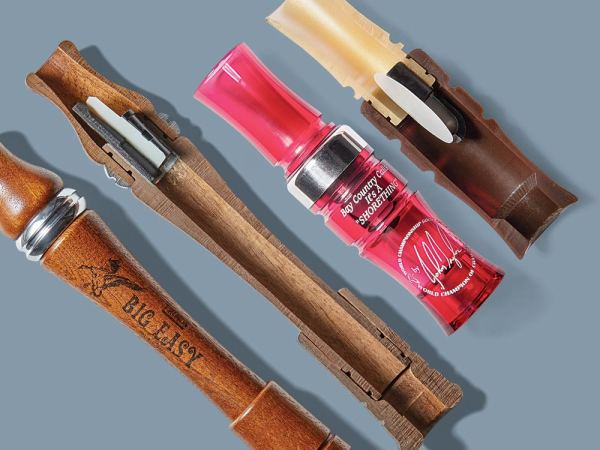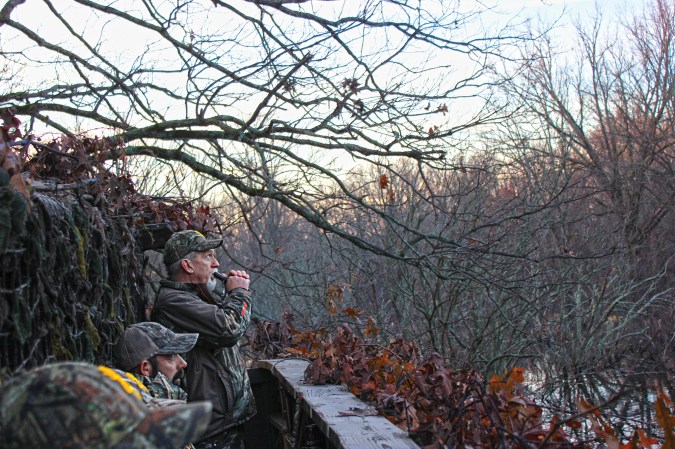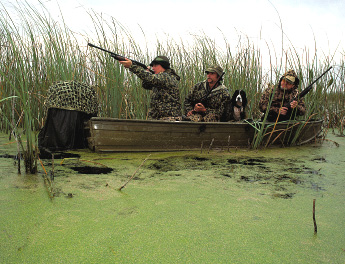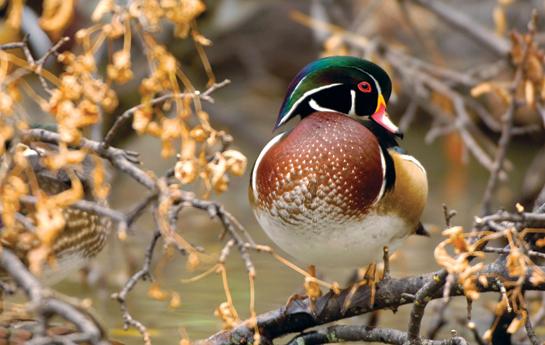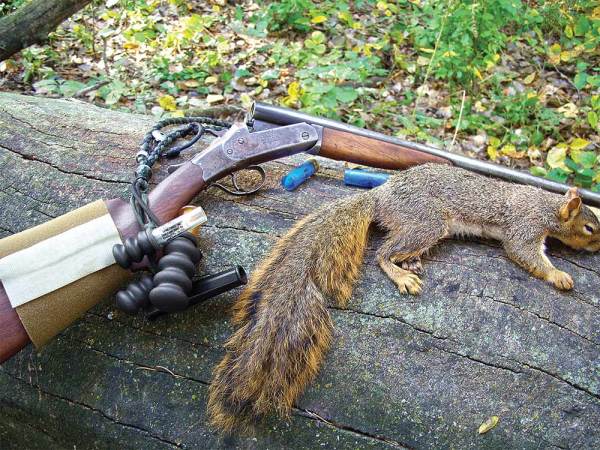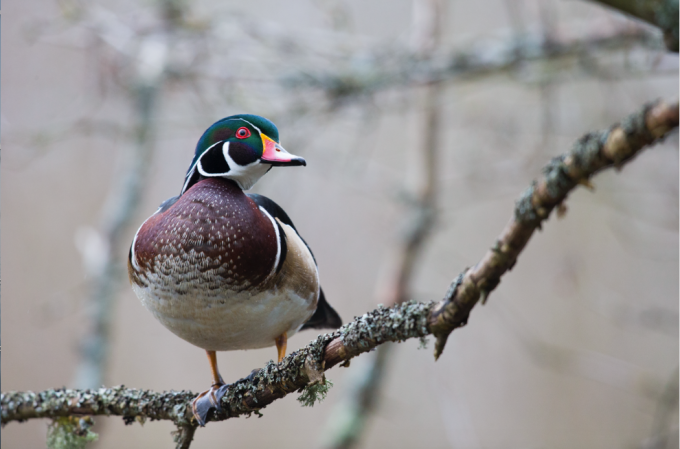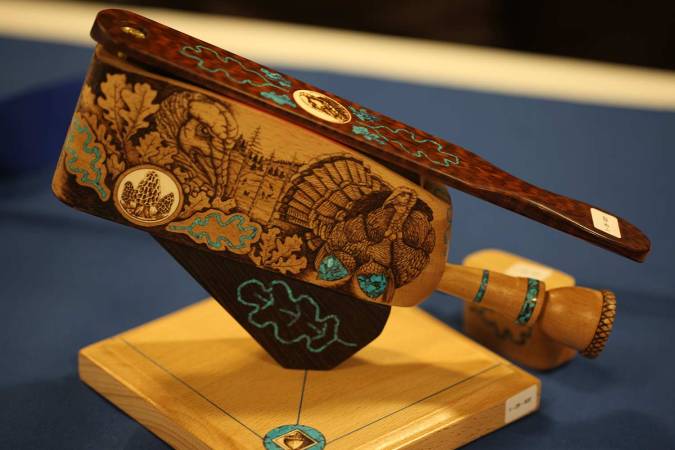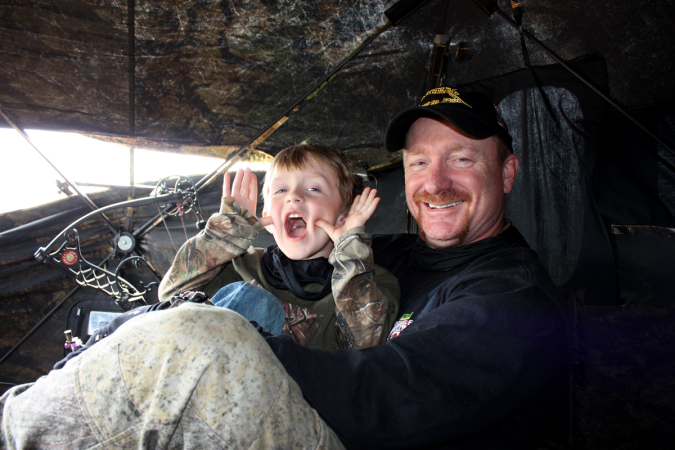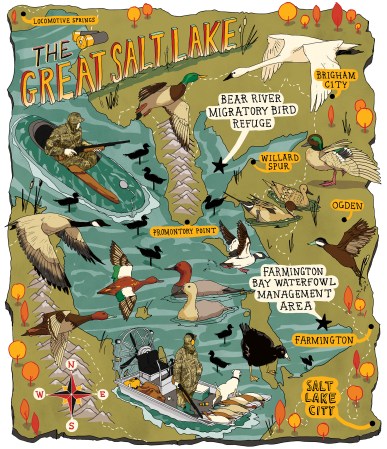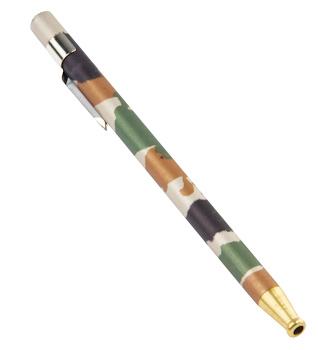Your decoys are set and you wait patiently in the blind. Ducks appear on the horizon. A few hail calls turn them your way. The ducks circle once. They seem interested. You continue to call, trying to coax the birds within range. But they circle twice more. Their heads move from side to side. Then the cautious birds disappear over the horizon again.
These days ducks seem to come in two varieties: cautious and extremely cautious. Still, there are ways to woo some of these wary birds.
Will Primos, founder of Primos Hunting Calls, has spent countless hours testing and perfecting duck calls. The first thing he stresses is purity. Many waterfowlers have been incorrectly trained on how to blow the hen mallard quack, which is the building block for many calls. And many hunters don’t know where to begin with the new calls.
The reeds for old-time calls were fabricated from hard rubber and heavy plastics. To get a good duck sound you had to put voice into the call. Today, reeds are made from better materials, including Mylar, that make producing sound easier. If you put voice into these calls you’ll get some distortion from a true duck sound.
The basic hen mallard quack can be made by loudly whispering the sound “ut.” Practice until you can create this sound without any voice.
Primos recommends a simple test for waterfowlers. Have a friend stand in an open marsh 150 yards away. Then blow your call. If he cannot tell the difference between your call and a real duck then the sound is pure. If he can hear your voice, the call lacks purity.
Once you’ve achieved purity, Primos suggests expanding your repertoire. The feeding call and standard hen quacks are both good confidence calls, but he complements the feeding call and hen quack with other sequences when calling ducks.
The “Skanch”
When ducks first fly past the spread, Primos likes to use a standard comeback call followed by a comeback call with a little “skanch” added in. The skanch mimics content hens. When hen mallards are feeding you can hear them fussing at each other with high-pitched, fast-paced quacks. This is the skanch Primos is describing.
To reproduce the skanch you have to raise the pitch and use a faster cadence. The cadence is easy to produce, but there’s a trick to the pitch.
“I like to choke my double-reed call down real tight with my lips,” says Primos. “The air hits the reed going through a narrow opening. It creates a higher pitch.”
The sound can best be represented by blowing utt–ut-ut-ut. The dashes or breaks are not evenly spaced and the pitch is higher than normal.
This sequence works best if you start with the comeback call and add the skanch as the birds begin to bank. This tells them, “I’m excited–come on in!”
The Drake Whistle
One of the most overlooked calls is the drake whistle. It’s particularly effective late in the season.
“Blow the whistle one, two or three times, especially when singles or pairs are working,” says Primos. “I’ve called in a pair with just a drake whistle.”
According to Primos the whistle is subtle, which is welcomed by call-shy ducks. Furthermore, Primos believes that with any game animal it’s important to respond in kind to their call. Therefore, when you hear a grunt as a drake passes your spread, you should grunt back with the whistle.
If you notice several smaller groups passing your blind, limit your spread. Setting two hens and one drake out in a pothole and employing the whistle can be deadly.
Fortunately, the whistle is very easy to learn. You simply hum with your voice “zzz” into the call. Unlike most duck calls, voice is needed when mimicking the drake grunt. You can achieve added realism by adding back pressure to the exhaust with your fingers and opening them as you reach the end of the grunt.
The Soft Quack
The soft quack is effective when working call-shy birds. The basic sound used to make the soft quack is the same as the standard quack. The difference is the delivery.
To make the soft quack, blow more slowly than you do for the standard quack. Draw the sound out instead. Primos describes the soft quack as slow and easy. It’s also important that you pause between the soft quacks.
Once the birds fly past your spread and start to bank in reaction to your comeback calls, give them a few soft quacks. It’s very important that you immediately respond to the ducks when they start to bank. This is their way of signaling interest.
Multiple Callers
Another way to coax weary ducks is to hunt with other callers. Primos notes that several species of duck often congregate in the same area, including blue-wing teal, wood ducks, pintails and mallards. It’s natural for one hen mallard to call to approaching flocks while the other ducks chatter among themselves. This chatter builds the confidence and piques the curiosity of approaching birds.
One caller in the group should take the lead role. He should communicate with the working flock. The other callers should create chatter, setting the main call against background noise. The realism of multi-species chatter can make the difference.
Beyond the Call…
Lastly, Primos likes to hunt on days with steady, predictable winds. It’s much more difficult to hunt when calm, variable winds prevail because you can’t predict the birds’ approach.
“When ducks bank into steady winds they’re more committed,” notes Primos. “If they don’t commit the third time they circle I know that something’s wrong.” This is the time to take a passing shot if the birds are within range.

